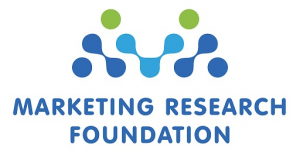MAPS, even more data – all in one place
The Marketing Research Foundation (MRF) recently presented the latest Marketing All Product Survey (MAPS) to its subscribers and the media. This release comprised the first full calendar year, January 2021 to December 2021 fieldwork of data and is the second MAPS release for 2022.
“Since we started the MRF and MAPS, there have been a total of six releases of data and now, with the latest release, we have 18 months of data, building trendable data and new observations in consumer behaviour,” says MRF’s CEO, Johann Koster. “With fieldwork started in July 2020 we will reach 24 months of continuous fieldwork at the end of June 2022. This amounts to 40 000 interviews and over 21 000 diaries that have been completed.”
For this release, the sample target of 20 000 face-to-face interviews and 10 000 leave-behinds were again surpassed by achieving 20 052 and 11 136 respectively.
MAPS is a continually evolving survey and covers, for example, consumer life stages and life styles, media consumption, purchasing behaviours, financials (banking products and consumer behaviour) and product purchasing, from household groceries to pet food. The survey segments by means of LSMs, SEMs, self-perceptions, demographics and income. Interesting to note is the consumer’s self-perception of parenting and health status. 34% of those surveyed with an average income of R12 947 believe that their parenting skills are good giving themselves a score of nine or ten out of a possible 10. Conversely, households that earned less than R10 000 only rated their parenting skills and health between one and four.
The survey also measures the macro media and penetration of print (newspapers 39%, newspaper inserts 15%, magazines 11% and store magazines 19%), radio (71%), TV (74%), cinema (1%), online (streaming media 40% and social media 53%) and Out of Home (58%). During this fieldwork period, there was decline in most media types, in all probability, due to the changing Covid restrictions in South Africa.
One of the favourite questions asked is how consumers multi-screen or multi-platform, and this is answered in detail. Respondents were asked which secondary activities they engage with while using various media platforms. While watching TV, 40% of respondents favour browsing social media and 21% listen to the radio. Interesting to observe is that radio is the most frequent secondary activity while streaming, surfing the internet, reading a newspaper or magazine. This suggests that radio is a high frequency companion media and social media is omnipresent.
The data also goes in great detail with regard to categories like cellphones, financial services and automotive. The Cellphone category for example includes purchasing behaviours, top cellphone brands (Samsung 29% with the second brand – Nokia – coming in at 17%), top networks (Vodacom 39%), average monthly spend, household entertainment and top Internet Service Provider.
Taking segmentation even further, the Media Stretch analysis was demonstrated by Dr Sifiso Falala from Plus94 Research. Cluster analysis makes it easy for marketers to target customers, instead of having one general marketing approach. To help analyse media data, clusters based on the intensity of media usage were created. Dr Falala says that consumers face a bewildering choice of media platforms and the media and advertising industry also want to know what platforms (and how many other different platforms) are being used by whom. Four stretch levels that includes Social Media, Cinema, Magazines, Store Magazines, Newspapers, Streaming, Radio, Television, Internet and Out of Home mediums were identified – Low Stretch (0-2 mediums) at 29%, Lower Medium Stretch (3-4 mediums) at 26%, Upper Medium Stretch (5-7 mediums) at 38% and High Stetch (8-10 mediums) at 7%.
According to Koster, the Media Stretch analysis is still in testing phase and will be trialed by a small user group over the next month or so before being released to MAPS subscribers.
With an amazing amount of data available to subscribers, the presentation only scratched the surface. The full presentation and recording can be downloaded or viewed on the MRF’s website – https://mrfsa.org.za/MAPS/#presentations.
The near future will be a busy time for the MRF. A full independent audit of MAPS and its underlying processes, procedures and protocols will be undertaken. With 18 months’ worth of released data available it is the opportune time to implement any possible corrective steps while the survey is still relatively young. The next MAPS releases are scheduled for August 2022 and November 2022, covering the respective fieldwork periods of April 2021 to March 2022 and July 2021 to June 2022.
“Thank you to everyone at the MRF and Plus94 Research that have put in a herculean effort to make this data available,” concludes Koster. “Thank you too to our subscribers, that have made this all possible, and the industry who took the time in their busy schedules to attend the webinar. We look forward to the next release in August.”
For additional information on MAPS – https://mrfsa.org.za/maps/
Social Media: Facebook – https://www.facebook.com/MRFSouthAfrica/
LinkedIn – https://www.linkedin.com/company/mrfsa
